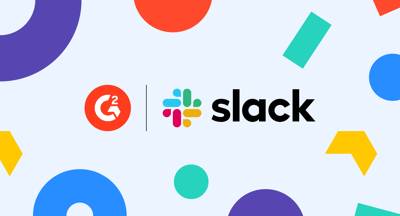October 31, 2025
 by Harshita Tewari / October 31, 2025
by Harshita Tewari / October 31, 2025

Marketing and sales teams talk a lot about alignment, but in practice, it rarely happens.
Marketing runs campaigns. Sales runs outreach. RevOps cleans up the mess in between. Somewhere in that chaos, high-intent accounts fall through the cracks.
That’s where account-based orchestration platforms come in. They’re built to connect every part of the GTM motion, helping teams act on buying signals, prioritize the right accounts, and coordinate outreach across channels. Still, with so many tools claiming to do it all, figuring out which ones actually deliver can feel like a guessing game.
So, I evaluated over 15 tools to find the 5 best account-based orchestration platforms using G2 Data and verified reviews. The five that stood out are the ones that truly help B2B teams operate as one unit by combining strong data intelligence, workflow automation, and measurable revenue impact.
If your goal is to turn disconnected tools and signals into a single go-to-market rhythm, this list is for you.
*These account-based orchestration platforms are top-rated in their category, according to G2’s Fall 2025 Grid Report. I’ve added their standout features to make the comparison easier for you. Contact sales teams to find out about pricing details.
B2B marketing used to be simple: run campaigns, generate leads, and hand them off to sales. But as buying cycles grew longer and teams adopted dozens of tools, it became harder to see which accounts actually mattered. Today, most revenue teams have the data; they just can’t act on it fast enough.
That’s where account-based orchestration platforms prove their value. They connect data, intent, and engagement signals across your CRM, marketing automation, and ad tools, giving teams a single source of truth. Instead of guessing who’s ready to buy, these platforms help you prioritize accounts showing intent and automatically launch coordinated plays.
When done right, orchestration turns every touchpoint: ads, emails, calls, into part of one connected buyer journey. It’s the difference between chasing leads and engaging accounts already in-market.
And the market is catching on. According to industry research, the market was valued at USD 1.2 billion in 2024 and is projected to reach USD 4.5 billion by 2033.
I started with G2’s Grid® Report for the account-based orchestration platform to identify top-rated and emerging players in the space. This included platforms known for strong integrations, advanced analytics, and verified customer satisfaction scores.
Next, I analyzed hundreds of G2 reviews using AI-assisted clustering to uncover recurring themes, what users praised most (such as automation, data unification, and predictive scoring), and what they wished worked better (like the learning curve or customization depth).
To validate those patterns, I spoke with industry peers who lead ABM, marketing operations, and RevOps teams. Their firsthand experience enabled me to see how these platforms function beyond initial onboarding, how effectively they integrate into complex tech stacks, facilitate collaboration between departments, and adapt as teams grow.
All product visuals featured in this article are sourced from official G2 vendor pages and publicly available materials.
I considered the following factors when evaluating the best account orchestration solution for boosting sales.
The list below contains genuine user reviews from the Account-Based Orchestration Platforms category page. To be included in this category, a solution must:
*This data was pulled from G2 in 2025. Some reviews may have been edited for clarity.
HubSpot Marketing Hub continues to be one of the most popular choices for small and mid-market teams that want to manage account-based orchestration and CRM-driven marketing in one platform. According to G2 Data, 51% of its users come from small businesses and 43% from mid-market organizations, largely in industries like computer software, IT, and marketing services.
HubSpot’s CRM integration is a core reason it performs so well in orchestration scenarios. G2 reviewers frequently highlight how the CRM and marketing automation layers communicate seamlessly, creating a single source of truth. This shared visibility enables teams to track engagement at both the contact and account levels, align messaging across departments, and trigger outreach when buying signals are detected. By keeping every data point connected, HubSpot makes it easy for revenue teams to act quickly on meaningful account activity rather than reactive lead lists.
The platform’s workflow automation features are another major strength. Reviewers praised the ease of designing account-based workflows that automatically adjust outreach based on engagement signals, deal stages, or lifecycle movements. Marketing teams can trigger personalized campaigns, assign tasks to sales reps, or update CRM records instantly, minimizing manual coordination.
HubSpot also shines in account segmentation and targeting. G2 users noted how easy it is to create targeted campaigns using the platform’s visual filters and list tools. Its AI capabilities help uncover hidden high-value segments by finding patterns humans might overlook, allowing teams to identify strong-fit accounts earlier in the journey. You can build precise audiences from CRM data, website visitors, and engagement history, then use those personalized segments consistently across channels like email, ads, and sales outreach.
G2 reviewers appreciate how HubSpot connects marketing activity to pipeline and revenue data through clean, accessible dashboards. These analytics don’t just report on campaign performance; they show how different touchpoints influence account progression. While its simplicity means it won’t replace enterprise-grade BI tools, it provides the actionable visibility most RevOps teams need to prove impact and refine strategy continuously.
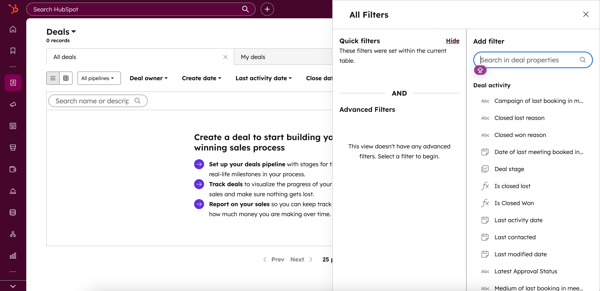
Another recurring strength is HubSpot’s integration ecosystem. With native connections to Salesforce, LinkedIn Ads, Slack, and hundreds of third-party tools, cross-channel orchestration becomes simple and dependable. These integrations maintain campaign consistency and synchronize data across systems. Many reviewers mentioned that this flexibility allows HubSpot to scale as a team’s stack grows, extending its orchestration capabilities well beyond marketing automation alone.
Ease of use is another theme that consistently surfaces in G2 reviews. Users appreciate HubSpot’s intuitive layout, guided setup process, and strong support documentation, which together make advanced features accessible even for smaller teams. This usability ensures that orchestration doesn’t get bottlenecked by technical complexity, and teams can focus on running campaigns rather than managing tools. For small to mid-sized companies, that usability translates into faster time to value and better adoption across departments.
HubSpot offers extensive workflow flexibility, which some G2 reviewers mentioned may require extra time to master. Teams that want to take full advantage of advanced automation may need a short learning period to set up their first models. However, most agreed that this initial setup phase pays off quickly once teams see how much manual coordination it replaces.
Pricing also came up in reviews as a point of consideration. G2 reviewers noted that HubSpot’s tiered pricing structure reflects its scalability. It grows with your team’s needs rather than limiting functionality early on. While some saw it as an investment, most agreed that the return on time saved, campaign alignment, and reporting visibility more than justified the cost.
Overall, HubSpot Marketing Hub stands out as an approachable yet powerful orchestration platform with seamless CRM integration, intelligent automation, and alignment-driven design.
“HubSpot integrates seamlessly with almost every tool — whether for enterprises, scale-ups, or startups. The data flow between platforms is smooth, and the overall experience feels cohesive. It’s one of the most complete marketing platforms I’ve used, offering true end-to-end functionality without needing additional tools.”
- HubSpot Marketing Hub review, Pavithra L.
“While powerful, HubSpot can feel expensive as our contact list grows, and certain advanced features are locked behind higher-tier plans. The learning curve can be steep for beginners, and customization options for some reports and templates are limited. However, once set up, it’s a highly effective tool overall.”
- HubSpot Marketing Hub review, Roji Kurian I.
Related: Looking for tools that help teams ramp faster and sell smarter? Explore the best sales training and onboarding software.
6sense Revenue Marketing is a reliable tool for revenue teams aiming to eliminate guesswork in account prioritization. With 56% of its users coming from mid-market businesses and 35% from enterprises, according to G2 Data, it’s particularly suited for teams managing complex buying cycles across multiple regions and products. The platform is best known for transforming fragmented intent data into coordinated actions across marketing and sales.
At the heart of 6sense’s orchestration power is its AI-driven intent and predictive modeling. G2 reviewers consistently praised how the platform surfaces hidden buying signals and pinpoints which accounts are likely to convert before traditional analytics catch up. Its predictive scoring combines firmographic, technographic, and behavioral data to show when and where a buying decision is forming. This enables teams to focus on high-potential accounts and develop tailored strategies aligned with the buyer's journey at the right time.
The platform also stands out for its deep account and contact insights. Reviewers highlighted how 6sense gives visibility into who is researching what, across channels and devices, and how that behavior correlates with pipeline outcomes. For marketing and sales teams working in parallel, these insights help synchronize outreach and eliminate guesswork.
When it comes to cross-channel orchestration, 6sense integrates with tools such as Salesforce, HubSpot, LinkedIn Ads, and Marketo. Reviewers noted that it automates the moment-to-moment execution of campaigns, triggering targeted ads, SDR alerts, or email sequences when accounts reach specific intent thresholds. This orchestration ensures that sales and marketing act on the same insights simultaneously, something few standalone tools manage effectively.
6sense also excels in revenue analytics and reporting, providing clear visibility into how engagement drives business outcomes. G2 reviewers praised how it reveals which accounts are active, what topics they’re researching, and where they sit in the buying journey. Built-in reports like Buying Stage and Funnel Insights show how campaigns move accounts from ICP to closed deals, while industry-level dashboards highlight which segments are showing the strongest intent. For most teams, this clarity makes it easier to measure ROI and optimize campaigns based on real revenue impact.
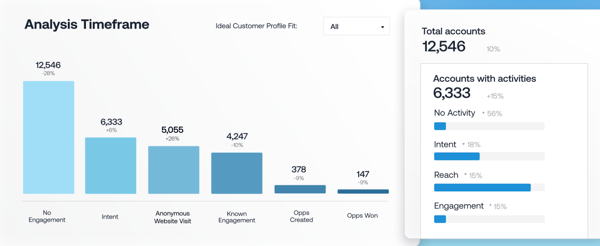
Another consistent theme among G2 reviewers is 6sense’s integration ecosystem and scalability. The platform easily connects with CRM, MAP, and data warehouse systems, serving as the intelligence layer that keeps everything in sync. Users in enterprise environments appreciated how flexible its architecture is, powerful enough for large data sets yet approachable for mid-market teams.
Customer support and onboarding also emerged as differentiators. Reviewers highlighted 6sense’s enablement programs and hands-on guidance, particularly for organizations new to predictive orchestration. The vendor’s training materials, documentation, and advisory sessions help teams understand not only how to use the tool but how to operationalize its insights effectively.
The platform’s depth and flexibility mean that implementation takes planning. Some G2 reviewers noted that configuring predictive models and aligning data sources can require dedicated operations time at the start. Many saw this as an investment in long-term orchestration maturity. Once workflows are in place, the system runs with minimal manual oversight. For teams that value precision and control, the setup phase is often seen as part of the payoff.
While 6sense is positioned at a premium tier, many noted that the value comes from consolidating multiple tools: intent data, advertising automation, and analytics, into a single unified platform. Teams that once relied on several disconnected systems found that 6sense replaced them with a single, intelligent source of truth, reducing both operational complexity and the long-term cost of ownership.
All in all, 6sense Revenue Marketing stands out as a sophisticated, data-first orchestration platform for mid-market and enterprise revenue teams.
“The quality of the data. We've seen a significant decrease in our cost per opportunity since implementing 6sense. The alignment from Sales & Marketing, combined with tight segmentation, means we are very efficient and confident in who we are trying to reach. Customer support is awesome, and I know it's dependent on the person you are assigned to, but huge props to Ivan here.”
- 6sense Revenue Marketing review, Charles-Olivier R.
“The platform can feel complex at first and requires ongoing training to make sure teams know how to use it properly. In addition, some of our internal Salesforce data is messy, which makes it harder for sellers to take full advantage of the insights 6Sense provides. When the account hierarchy or data quality isn’t clean, it can create confusion for the team and limit adoption. While this isn’t a fault of 6Sense itself, it does highlight how important clean CRM data is to get the most value from the platform.”
- 6sense Revenue Marketing review, Sicily H.
Related: Want to dive deeper into how teams track performance post-orchestration? Check out our guide to the best sales analytics software.
For companies managing complex B2B buying cycles, Demandbase One serves as the central hub for account-based orchestration. It brings marketing, sales, and operations together around one shared data foundation. According to G2 Data, 62% of its users come from mid-market companies and 30% from enterprises, primarily in the software, IT, and marketing industries.
One of the platform’s most valued strengths among G2 reviewers is its precision-level data orchestration. Demandbase unifies first and third-party data, intent signals, and CRM records into a single account view that updates in real time. This gives GTM teams a synchronized understanding of where every account stands in its journey, reducing duplication and improving coordination across departments.
Another standout feature is AI-powered targeting and personalization. G2 reviewers highlighted how the platform automatically surfaces the right accounts and adapts messaging based on buying signals and readiness. This intelligence enables marketing teams to personalize engagement across advertising, web, and outbound channels without requiring extensive manual setup.
Demandbase also excels in connected ad and web orchestration. The platform links ad campaigns, website personalization, and outbound engagement, ensuring that when an account’s intent increases, the messaging and content adapt instantly. This connection between channels helps create a consistent buyer experience, something enterprise teams often struggle to maintain at scale.
Another strength is its robust revenue analytics and reporting capabilities. G2 reviewers praised how Demandbase connects intent, engagement, and conversion data to show exactly how marketing and sales activities drive pipeline growth. The analytics layer visualizes which industries, campaigns, or regions are performing best, enabling teams to spot revenue opportunities and optimize in real-time.
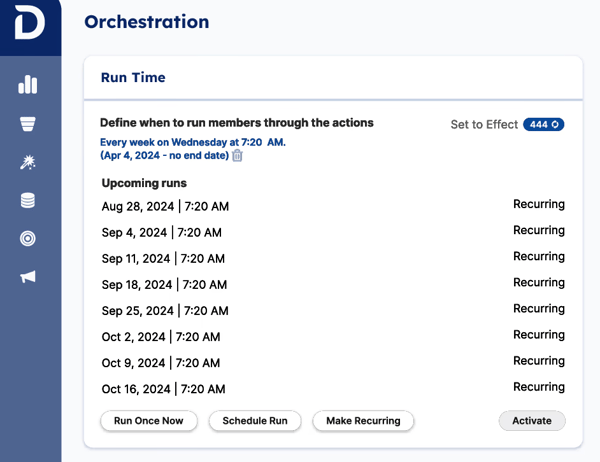
Flexibility is another area where the tool earns recognition. Reviewers noted that its architecture adapts well to complex GTM structures, whether it’s multiple business units, global teams, or distinct data systems. With integrations into Salesforce, HubSpot, and Marketo, teams can maintain orchestration consistency while customizing workflows to their specific needs.
Ease of integration and cross-department collaboration were also highlighted in G2 reviews. Many users described how Demandbase serves as a shared workspace between marketing, sales, and RevOps teams, replacing disconnected workflows with unified processes. The ability to collaborate on shared dashboards and audiences means fewer data gaps and more coordinated execution.
Many G2 reviewers mentioned that Demandbase’s advanced capabilities require time and coordination to master. Implementing its predictive models and automation features encourages stronger alignment between marketing, sales, and RevOps from the start. Teams that invest the time to build well-structured workflows often find that the platform’s orchestration power multiplies once everything is connected.
A few G2 reviewers also shared that working with multiple data sources can occasionally reveal syncing differences, but most saw this as an opportunity to strengthen internal data governance. Demandbase’s transparency helps teams identify data gaps and refine their CRM or intent integrations more proactively.
To sum up, Demandbase One is best suited for mid-market and enterprise organizations ready to operationalize account-based strategies at scale. Its balance of AI intelligence, orchestration depth, and reporting visibility makes it one of the most comprehensive platforms for aligning marketing and sales around shared revenue goals.
“Demandbase One is one of the most complete ABM platforms in the market. The quality of intent data and the precision in identifying and prioritizing target accounts are impressive. It helps align marketing and sales around the same goals, providing a clear picture of where to focus efforts. I also appreciate how it integrates well with Salesforce and HubSpot, making it easier to operationalize ABM strategies at scale.”
- Demandbase One review, Felipe S.
“The navigation and filtering interface can feel sluggish and unintuitive at times. Applying multiple filters (e.g., industry + intent score + location) often requires extra clicks, and the “Reset” button isn’t always obvious. A more streamlined, responsive filter panel would make data exploration much smoother."
- Demandbase One review, Austin G.
Related: Curious how AI is reshaping sales conversations and deal execution? Discover the best AI sales assistant software.
Warmly brings a refreshing approach to account-based orchestration for small businesses that want real-time visibility into who’s visiting their website and how to act on that intent. According to G2 Data, 84% of its users come from small businesses, primarily in the software, marketing, and design industries. Unlike heavier enterprise systems, Warmly focuses on speed, simplicity, and connection, helping smaller teams personalize outreach, qualify leads more quickly, and bridge the gap between engagement and action.
A defining strength among G2 reviewers is Warmly’s real-time account recognition. The platform identifies visiting prospects the moment they land on your site and shows which pages they explore. Instead of waiting for form fills or CRM syncs, teams can see who’s engaging right now and respond immediately. For small marketing teams, this visibility transforms casual website interest into prioritized outreach moments.
Warmly also stands out for its personalized engagement features. Reviewers highlighted how teams can tailor chat experiences, follow-ups, and email sequences based on live visitor data. Whether it’s greeting a repeat visitor with context or alerting a rep the moment a decision-maker returns, Warmly helps ensure every interaction feels timely and personal. For many users, it’s the difference between chasing leads and meeting intent in real time.
Another capability reviewers praised is smart automation built for lean teams. Instead of complex workflows or coding, users can set simple rules that trigger instant actions, such as adding a visitor to a nurture list or alerting sales when engagement peaks. This makes Warmly approachable yet powerful; it helps smaller organizations orchestrate account interactions without the technical overhead of enterprise systems.
Warmly’s approach to integrations is also refreshingly practical. Rather than connecting data for the sake of it, integrations act as real-time extensions of activity, syncing visitor insights to HubSpot, enriching Salesforce records, or pushing instant notifications to Slack. G2 reviewers appreciated that this connected flow keeps marketing and sales aligned without requiring extra tools or manual reporting.
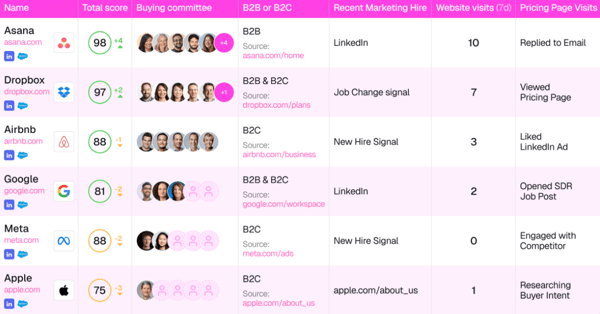
Reviewers also mentioned visibility and analytics as key advantages. The platform shows which industries or accounts are most active, what content they engage with, and when they return. These insights give small teams a fast feedback loop to adjust messaging or campaigns on the fly. For organizations running high-velocity marketing, this agility turns Warmly from a tracking tool into an orchestration assistant.
Customer support was another highlight across G2 reviews. Users appreciated Warmly’s hands-on onboarding and fast response times. The team’s willingness to customize advice for specific use cases makes the platform even more accessible to small businesses with limited operational support.
Some G2 reviewers mentioned that data accuracy could improve, as internet protocol (IP) recognition and enrichment tools occasionally misidentify smaller accounts or returning visitors. Still, this is a chance to refine their internal tracking and qualification criteria. Warmly’s transparent reporting helps teams quickly spot and correct these inconsistencies, ultimately improving the reliability of their lead data over time.
Another thing to note is that there aren’t enough recent G2 reviews to form a clear consensus on other areas for improvement. A few individual reviewers mentioned small opportunities around UI refinements, pricing flexibility, and the limits of the free plan. Still, most agreed that Warmly’s ease of use, quick setup, and responsive performance outweigh these minor concerns.
Warmly is best suited for small teams that want instant visibility into who’s showing interest and the ability to act on it right away. It’s not built for complexity; it’s built for momentum.
“I love the details about individuals' visits to the website, as well as the features to filter by intent. It has been very helpful to our sales team to identify new leads. Pretty easy to use and implement.”
- Warmly review, Carter H.
“I found the setup process of Warmly to be difficult and funky, as it seems like the platform is new with lots of bugs. These bugs hindered the initial experience and made the onboarding process cumbersome. There were no aspects of Warmly that would make me consider purchasing it again, primarily due to the presence of these bugs. My overall experience was underwhelming, which is reflected in my low likelihood of recommending the service.”
- Warmly review, Andrew S.
ZoomInfo Marketing combines data intelligence and account orchestration in a single platform. According to G2 Data, 53% of its users come from mid-market businesses and 35% from small businesses, largely in the computer software, IT, and automotive industries. ZoomInfo gives marketing and sales teams a unified view of their total addressable market, enabling them to identify the right accounts, understand intent, and coordinate outreach more effectively.
One of the most consistent themes in G2 reviews is ZoomInfo’s data accuracy and depth. The platform’s vast contact and company database allows users to identify decision-makers, uncover new buying centers, and update CRM records automatically. Reviewers highlighted how this reliable, always-on data foundation fuels better segmentation and smarter campaign planning.
Another major strength is intent detection and prioritization. G2 reviewers frequently noted how ZoomInfo’s intent signals help pinpoint which accounts are actively researching relevant topics or showing early buying behavior. This predictive layer allows marketers to time campaigns more strategically and hand off accounts to sales when interest peaks. Many reviewers credited these insights with helping their teams focus less on volume and more on meaningful, high-conversion engagement.
ZoomInfo’s orchestration capabilities stand out for their practical automation. Users can create workflows that automatically trigger ads, sequences, or CRM updates based on changes in account activity or intent levels. G2 reviewers mentioned how these automated plays reduce manual effort and ensure that marketing and sales stay aligned without needing separate ABM tools. For mid-sized organizations balancing multiple channels, this connected execution drives measurable efficiency.
The platform received positive feedback for its data enrichment and CRM integration capabilities. Reviewers appreciated how seamlessly ZoomInfo connects with Salesforce, HubSpot, and Marketo, maintaining accurate records with minimal manual effort. These integrations not only share data but also automatically update it, helping ensure targeting, personalization, and reporting remain effective. For revenue teams frustrated by outdated or incomplete records, this real-time enrichment stood out as a key advantage.
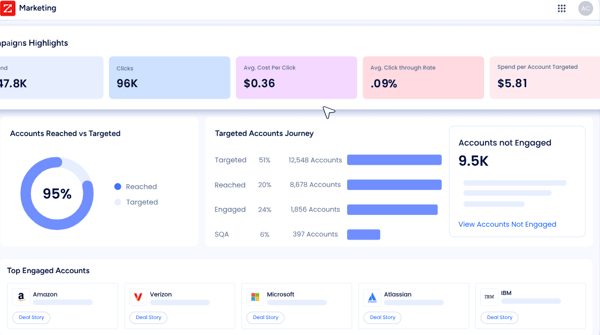
ZoomInfo also shines in campaign performance tracking. G2 reviewers praised its analytics for linking top-of-funnel activity to pipeline impact, helping teams understand which campaigns and audiences drive real ROI. Many mentioned that having both engagement and data intelligence in one place made campaign optimization more actionable.
Some G2 reviewers noted data freshness varies by industry or region, but viewed it as an opportunity to improve their use of ZoomInfo’s tools. By establishing data governance and utilizing regular updates, teams maintained cleaner, more reliable records. These proactive changes enhanced accuracy and uncovered higher-quality accounts previously overlooked.
Similar to Warmly, there aren’t enough recent G2 reviews to identify consistent themes around other improvement opportunities. However, a few individual users noted a little learning phase and scaling as considerations. Some noted that getting fully comfortable with ZoomInfo’s advanced automation and enrichment features can take time, while others said the cost may feel high for smaller teams. Even so, most agreed that the platform’s precision, scalability, and impact on data-driven marketing make it a valuable long-term investment once adopted.
ZoomInfo Marketing’s mix of data accuracy, automation, and measurable outcomes makes it one of the most trusted orchestration platforms for modern B2B teams.
“What I like best about ZoomInfo Marketing is the depth and accuracy of the data, combined with the automation tools. It makes it easy to identify the right audience, personalize outreach, and run campaigns that actually drive pipeline instead of wasting time on guesswork. The platform has quickly become part of my routine; I use it almost daily. And their customer support is excellent, which makes the whole experience smooth and reliable.”
- ZoomInfo Marketing review, Jess R.
"The pricing of this tool is a little bit higher-end. The platform used a credit-based system where each contact reveal or export consumes credits, making it expensive for high-volume users.”
- ZoomInfo Marketing review, Rohit K.
Got more questions, we have the answers.
According to G2 Data, HubSpot Marketing Hub and 6sense Revenue Marketing are the best account-based orchestration platforms. G2 reviewers praised HubSpot for its ease of use, CRM integration, and accessible automation, while 6sense earned top marks for its predictive intelligence and ability to help teams focus on high-intent accounts.
HubSpot Marketing Hub and ZoomInfo Marketing stand out for helping sales teams identify high-value accounts faster and act on intent signals with greater precision. G2 reviewers highlight their CRM alignment, automation depth, and strong analytics that connect marketing efforts directly to pipeline growth.
Based on G2 user reviews, the most effective orchestration tools include 6sense Revenue Marketing, Demandbase One, HubSpot Marketing Hub, ZoomInfo Marketing, and Warmly. These platforms combine data integration, automation, and real-time insights to improve coordination across go-to-market teams.
G2 reviewers consistently give high marks to HubSpot Marketing Hub for usability, 6sense Revenue Marketing for predictive precision, and Demandbase One for scalability.
Enterprise teams often prefer Demandbase One and 6sense Revenue Marketing because they handle complex data structures, global campaigns, and advanced AI modeling. Both platforms deliver the scale, automation, and analytics needed to coordinate multi-region ABM strategies effectively.
For small and mid-sized businesses, HubSpot Marketing Hub and Warmly are top choices. G2 reviewers note that these platforms combine ease of use with practical automation features, making them ideal for teams that want orchestration power without the complexity of enterprise-level solutions.
HubSpot Marketing Hub performs exceptionally well for service-based organizations that rely on CRM visibility and personalized campaigns. Its unified marketing and sales features help agencies and service firms target accounts based on lifecycle stage and engagement history.
G2 reviewers frequently cite 6sense Revenue Marketing and ZoomInfo Marketing as leaders in marketing automation within account-based programs. Their orchestration tools let marketers build automated plays triggered by buyer intent, engagement levels, or data changes.
Software and SaaS teams on G2 most often recommend 6sense Revenue Marketing, Demandbase One, and HubSpot Marketing Hub. These platforms integrate seamlessly with CRMs and analytics tools to target software buyers based on firmographic and behavioral intent data.
HubSpot Marketing Hub leads in integration versatility, connecting natively with CRM, email, ad, and collaboration platforms. ZoomInfo Marketing follows closely with its data enrichment and CRM sync features, ensuring sales and marketing teams always operate from up-to-date account information.
One thing I focused on while evaluating these platforms was how well they turn coordination into measurable pipeline impact, and the results were clear. Based on G2 Grid Report insights, every product featured here demonstrated strong ROI and user satisfaction scores, particularly in alignment, automation, and intent accuracy. That means teams using these platforms aren’t just running campaigns, they’re driving consistent revenue outcomes in less time.
And that’s what stood out across the board: these tools go beyond managing accounts. They help marketing and sales teams move in sync, act on real buying signals, and personalize every touchpoint with confidence. Whether it’s through AI-powered intent data, real-time engagement, or unified CRM orchestration, each platform here makes account-based strategy more focused, efficient, and outcome-driven.
If your goal is to move from activity to impact, these are the tools that prove orchestration isn’t just a workflow; it’s a growth engine.
Ready to explore more tools that drive revenue alignment? Check out the best sales performance management software.
Harshita is a Content Marketing Specialist at G2. She holds a Master’s degree in Biotechnology and has worked in the sales and marketing sector for food tech and travel startups. Currently, she specializes in writing content for the ERP persona, covering topics like energy management, IP management, process ERP, and vendor management. In her free time, she can be found snuggled up with her pets, writing poetry, or in the middle of a Netflix binge.
I don’t pull lead lists, but I know when they’re broken.
 by Harshita Tewari
by Harshita Tewari
Would you rather be addressed as “Hey there” or by your name?
 by Claire Brenner
by Claire Brenner
There’s nothing quite as satisfying as a cold drink on a sweltering summer day.
 by Stephen Hoops
by Stephen Hoops
I don’t pull lead lists, but I know when they’re broken.
 by Harshita Tewari
by Harshita Tewari
Would you rather be addressed as “Hey there” or by your name?
 by Claire Brenner
by Claire Brenner


